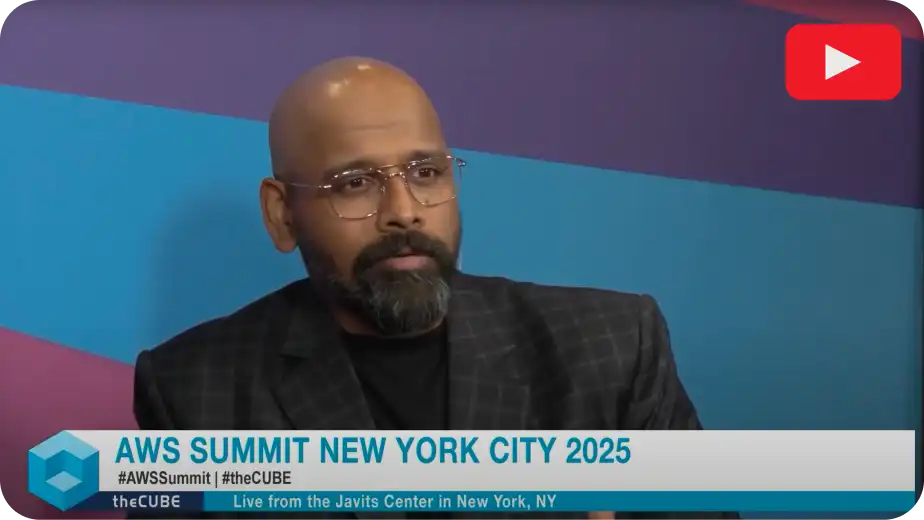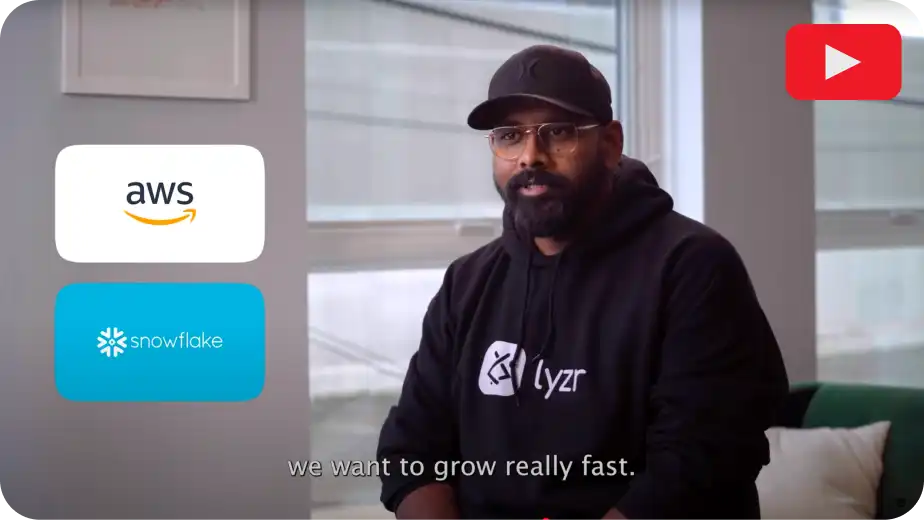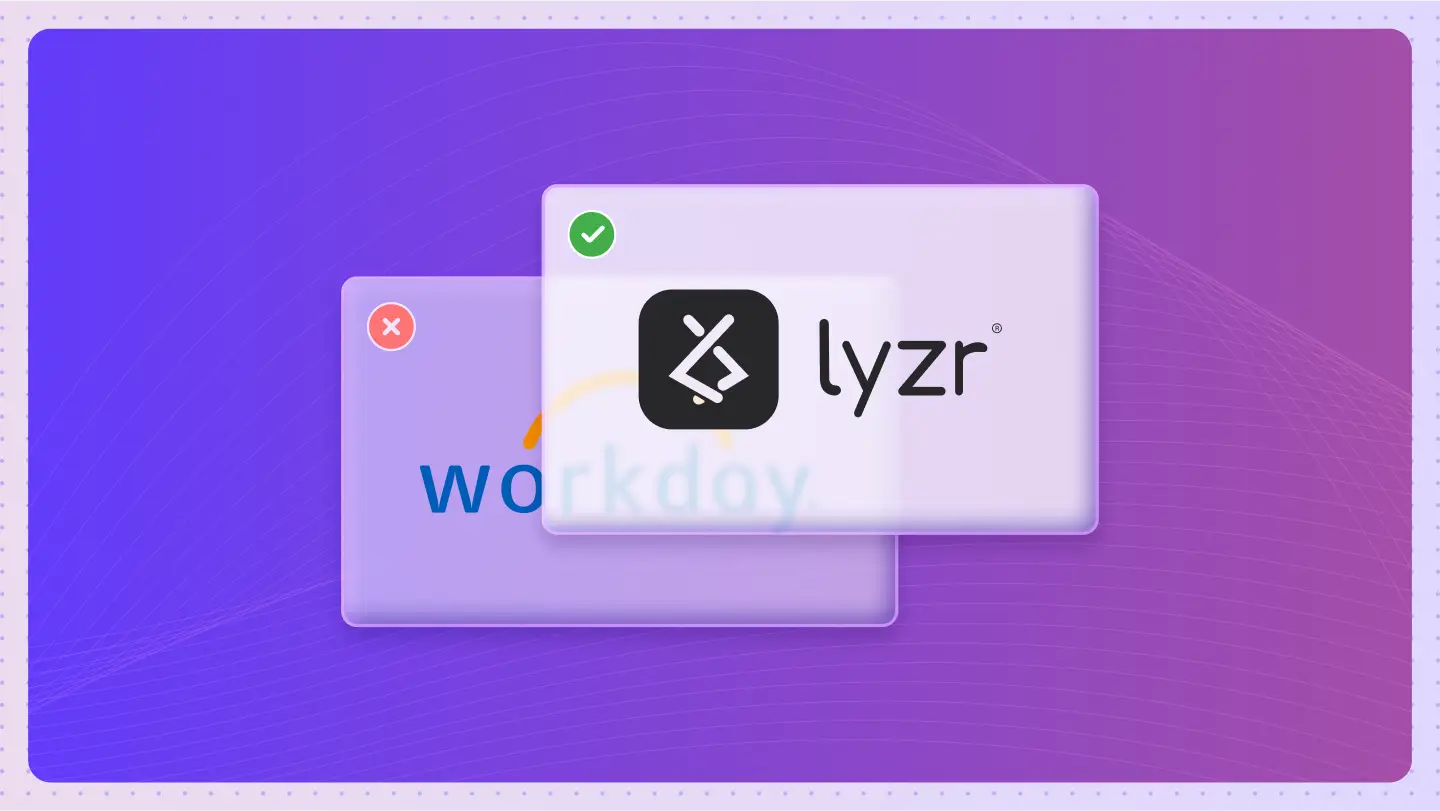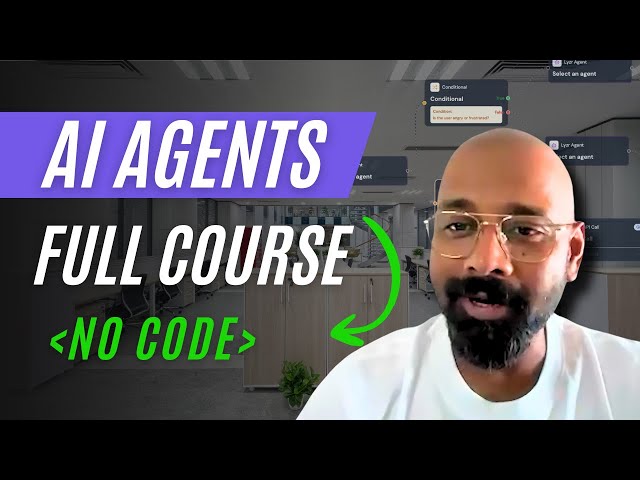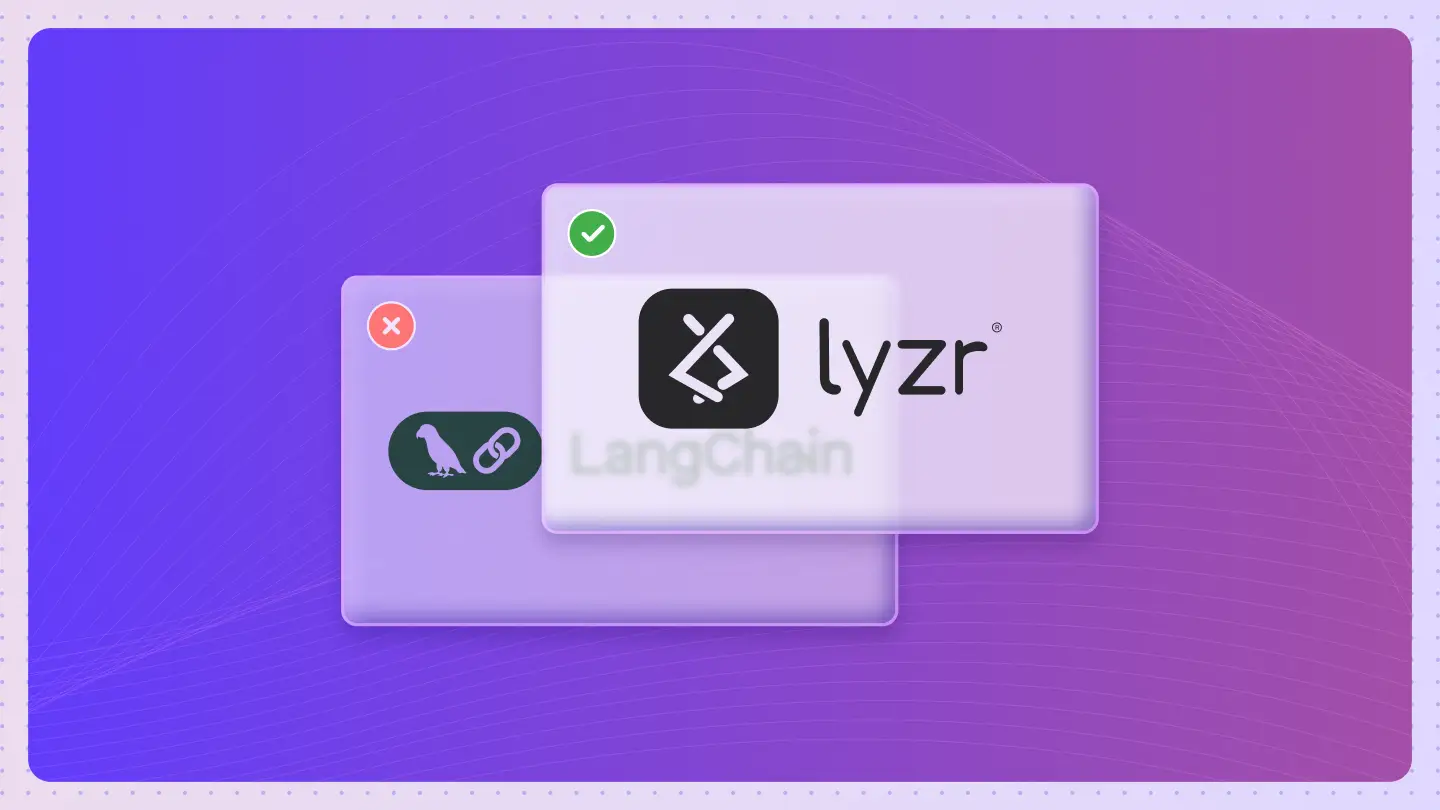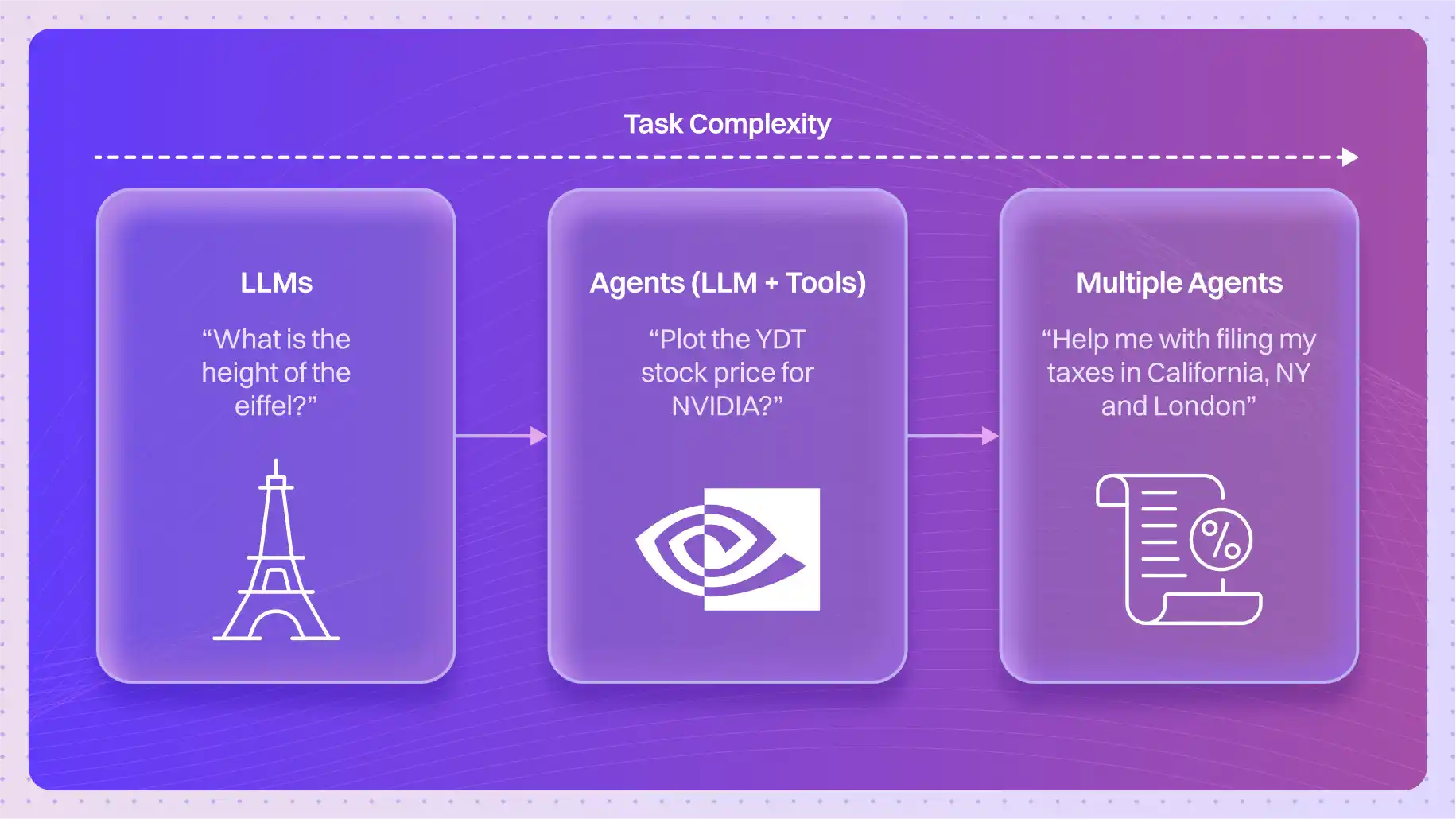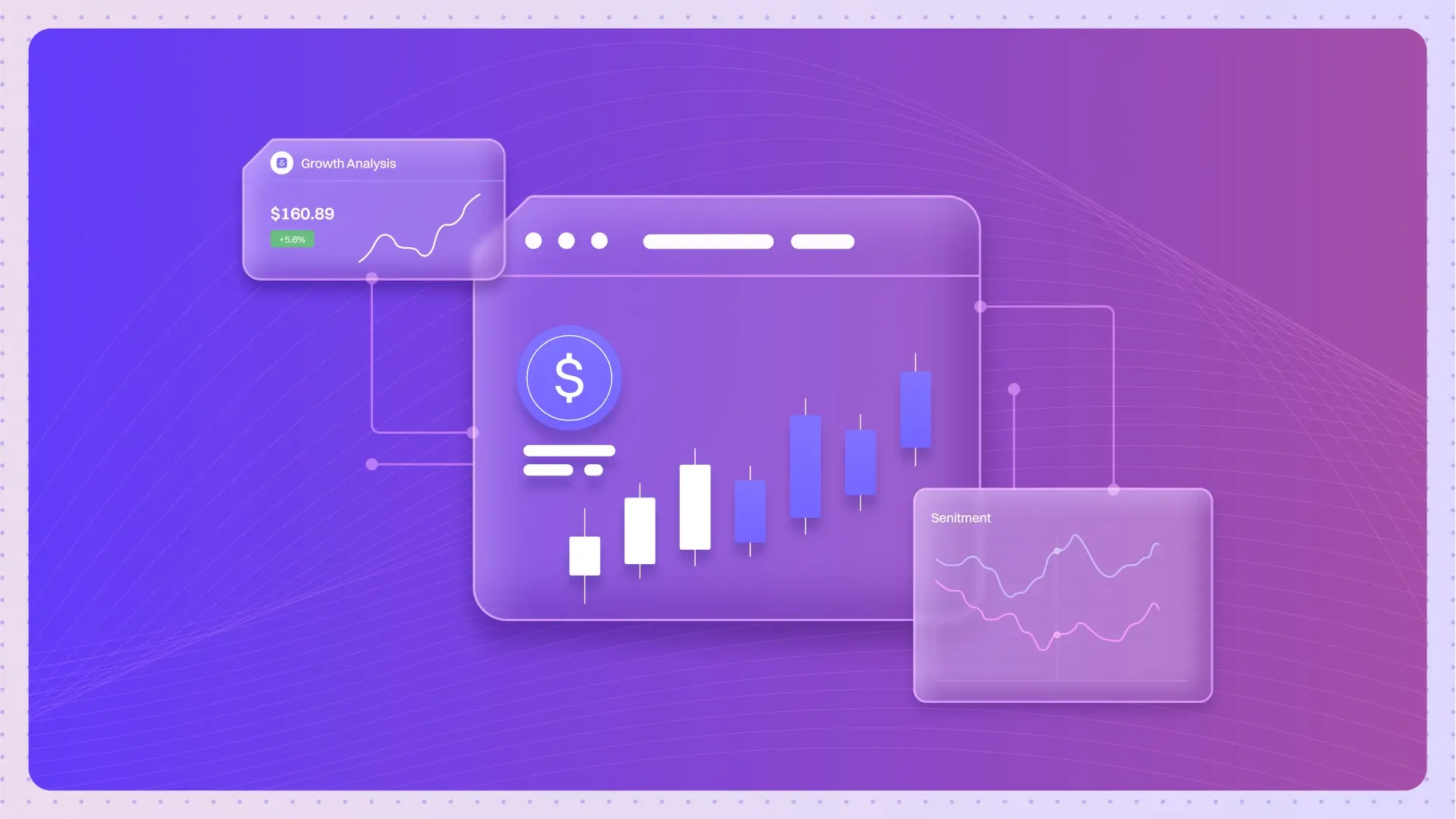Table of Contents
ToggleWe need to talk about the elephant in the server room.
For the last two years you have likely been bombarded with the promise of Generative AI.
You have seen the demos and you have played with the chatbots. You have probably even asked your engineering team to whip up something cool using the latest tools from the big providers.
It is exciting and it feels like magic. But as the initial euphoria fades a harder reality sets in. You are realizing that building a toy is easy but building a workforce is hard.
The trajectory of enterprise technology is rarely linear.
It moves in punctuated equilibriums. We are currently living through one of the most significant punctuations in the history of computing.
We are transitioning from passive command-based software to active intent-driven Agentic AI. For the C-suite this is not just a technical upgrade. It is an operational revolution. The novelty of the chatbot has faded and revealed a stark realization. Conversation is not automation. The true economic value of AI lies not in talking but in doing. This is why the search for a robust AgentKit alternative is becoming the primary directive for forward-thinking CTOs.

Here is the brutal truth we must confront. Relying on public cloud-native ecosystems for your core business logic is akin to building your corporate headquarters on rented land. The landlord can change the locks or hike the rent or inspect your files at any moment. The conventional answer has always been to prioritize speed. The advice is to use the easy button provided by the giants to get to market yesterday. But for serious enterprise speed without sovereignty is a trap.
This article will challenge that convention. We will explore why the true path to AI maturity is not about renting intelligence but about owning it. We will dissect why sovereignty is not just a technical preference but a strategic necessity for the C-suite. By the end of this piece you will understand why Lyzr Enterprise is the only logical architecture for the organization that values security and control.
The Context: The “Pilot Purgatory” Trap
Let us look at the current landscape with clear eyes. We are living through a shift that analysts at Forrester describe as the Agentic Pivot. We are moving from passive chatbots that wait for prompts to active agents that pursue goals. In this rush tools like OpenAI’s AgentKit have emerged as the default starting point. They are seductive because they offer a polished interface and instant access to powerful models. They allow you to spin up a prototype in an afternoon. But this speed hides a structural flaw that traps enterprises in what we call Pilot Purgatory.
The Mechanics of the Walled Garden
OpenAI’s AgentKit was launched as a comprehensive toolkit designed to unify the fragmented landscape of agent development. It sought to streamline the process by providing a monolithic stack that includes the Agent Builder for visual workflow design and the Connector Registry for managing tool integrations.
However this vertical integration creates a Walled Garden effect that poses significant friction for enterprise adoption. The architecture is inherently cloud-dependent. Every instruction and every piece of context and every tool output must traverse OpenAI’s infrastructure. While OpenAI has introduced robust enterprise privacy policies the physical reality of data transit remains a non-starter for highly regulated industries. Financial institutions handling SWIFT data or healthcare providers processing PII cannot legally or ethically relay this information through a third-party black box.
The Economic Risk of Token Dependency
Furthermore the economic model of AgentKit introduces volatility. The platform relies on token-based pricing for every step of reasoning and execution. In a complex agentic workflow a single user request might trigger a chain of internal reasonings and tool calls that each consume tokens. As the agent becomes smarter and more autonomous it becomes exponentially more expensive. This creates a perverse incentive where improving agent performance directly degrades the profit margin of the application. Enterprises require the predictable cost structures found in Lyzr pricing models rather than the variable and often opaque billing of utility computing.
The Vendor Lock-in Vulnerability
Perhaps the most significant strategic risk is vendor lock-in. AgentKit is tightly coupled with OpenAI’s models. If a competitor releases a model that is faster or cheaper or better suited for a specific task the enterprise is stuck. Migrating away from AgentKit would require a complete rewrite of the orchestration logic. This effectively holds the organization’s AI roadmap hostage to a single vendor’s capabilities.
| Feature | OpenAI AgentKit | Lyzr Enterprise | Strategic Implication |
| Deployment | Public Cloud Only | Private Cloud / On-Prem | Lyzr enables data sovereignty while AgentKit forces data transit. |
| Model Strategy | Single Vendor | Model Agnostic | Lyzr prevents lock-in and allows performance arbitrage. |
| Orchestration | Rigid / Sequential | Graph-Based (DAG) | Lyzr supports complex and non-linear business logic. |
| Reliability | Probabilistic Only | HybridFlow™ | Lyzr ensures accuracy for critical calculations. |
| Pricing | Token-based (Variable) | Flat License / Usage | Lyzr allows for predictable budgeting at scale. |
The Core Insight: Sovereignty is Strategy
The turning point comes when you realize that AI is not software. It is labor. You would not outsource your core executive decision-making to a consultant you cannot audit. Why would you do it with your digital intelligence?
The superior approach is Sovereign AI. This means bringing the AI to the data rather than sending the data to the AI. It means having the ability to swap out the brain without rebuilding the body. It means knowing exactly where every byte of data resides.
The Shift to Owned Intelligence
The enterprise architect must look beyond the demo. The question is not if we can build an agent fast but if we can build an agent that we own. We need agents that follow our strict governance protocols and that can evolve independently of a single vendor’s roadmap.
When you build on AgentKit you are essentially renting intelligence. You are paying a toll for every cognitive task your business performs. If your provider changes their Terms of Service or deprecates a model your workforce stops. In contrast Lyzr’s SDKs treat AI agents as Intellectual Property. The workflows you design and the prompts you engineer belong to you. They run on your infrastructure and they are governed by your rules.
The Model Agnostic Advantage
Consider the risk of model obsolescence. If you build on AgentKit you are building for OpenAI. If OpenAI is your foundation you are building for yourself. Lyzr’s architecture is fundamentally model-agnostic. You can use GPT-4o for complex reasoning and Claude 3.5 Sonnet for coding tasks and a locally hosted Llama 3 model for processing highly sensitive PII. This flexibility allows you to arbitrage performance and cost which ensures you are never held hostage by a single provider’s roadmap.
Curious about how to actually build AI agents using Lyzr’s frameworks? Here’s a hands-on tutorial covering the Lyzr Automata SDK, from Python code to no-code options, perfect for technical leaders and innovators:
Financial Predictability and TCO
CFOs hate surprises. The token-based pricing model of public APIs is a ticking time bomb. A simple research task might trigger thousands of internal reasoning steps costing you dollars instead of pennies. Lyzr shifts this to a predictable flat-fee structure or license-based model. You pay for the capability not the thought process. This allows you to scale usage without fear of a runaway cloud bill. It transforms AI from a variable operating expense into a predictable capital investment.
The New Approach: Lyzr.ai as the Sovereign Enterprise Infrastructure
If OpenAI AgentKit represents the Consumerization of AI then Lyzr represents the Industrialization of AI. Lyzr is not merely a tool. It is a comprehensive Enterprise Agent Framework designed to solve the Last Mile problem of AI adoption which includes security and privacy and control.
The Architecture of Sovereignty: Private Cloud Deployment
The defining feature of Lyzr is its deployment flexibility. Unlike AgentKit’s cloud-only mandate Lyzr supports On-Premise and Private VPC deployment. This means the entire agent infrastructure including the vector databases and the orchestration logic and the API gateways lives inside the customer’s own firewall.
For a bank or a government agency this distinction is existential. It ensures 100% Data Residency so data never leaves the organization’s control. This architecture naturally aligns with strict regulatory frameworks like GDPR and SOC2 and HIPAA. These are compliance certifications that Lyzr actively maintains. By bringing the AI to the data rather than sending the data to the AI Lyzr solves the primary blocker to enterprise AI adoption.
To see how enterprises can automate complex workflows end-to-end with Lyzr agents, watch this Lyzr demo on AI video automation. It shows the power of fully orchestrated, secure agent systems in action:
The Antidote to Hallucination
One of the most pervasive fears regarding AI agents is hallucination or the tendency of LLMs to confidently invent facts. In a creative context this is a quirk but in an enterprise context it is a liability.
Lyzr addresses this with its proprietary architecture. Hybrid Flow acknowledges that not every problem requires a probabilistic LLM. Some tasks are better suited for deterministic code. Lyzr allows developers to weave together LLMs for reasoning and natural language understanding with traditional Machine Learning models and hard-coded logic for calculation and rule enforcement into a single workflow.
For example a regulatory monitoring agent processing a loan application might use an LLM to understand the customer’s email intent but switch to a deterministic Python script to calculate the debt-to-income ratio. It would then use a symbolic AI rule engine to check compliance against the latest regulations. This Best of Both Worlds approach ensures that the output is not just human-like but mathematically accurate and auditable.
The Nervous System of Organizational Intelligence
While AgentKit focuses on connecting tools Lyzr focuses on connecting agents. AgentMesh is Lyzr’s proprietary communication protocol that facilitates Organizational General Intelligence.
In a traditional setup agents are siloed. A Sales Agent doesn’t know what the Support Agent is doing. AgentMesh creates a networked layer where agents can autonomously exchange information. If the Sales Agent learns that a prospect is concerned about security it can signal the Support Agent to prioritize security documentation in the onboarding package. This inter-agent collaboration happens without human intervention which creates a Collective Intelligence that grows stronger over time.
Lyzr as Enabler: The Rise of the “Super Agents”
Lyzr does not just provide the infrastructure. It provides the workforce. Recognizing that most enterprises face similar horizontal challenges, Lyzr has developed a suite of pre-built and highly specialized Super Agents. These are not templates. They are fully formed SaaS products built on the Lyzr framework that you can deploy instantly via Lyzr Agent Studio.
Jazon: The Autonomous Sales Development Representative
Jazon represents a paradigm shift in outbound sales. Traditional tools like Outreach or Salesloft are essentially mail merge on steroids because they automate the sending of emails while the thinking remains manual. Jazon acts as a digital employee.
Jazon does not wait for a list. It engages in Account Mapping by autonomously researching target companies to identify buying signals. It analyzes website behavior and news releases and hiring trends to understand context. Once the research is complete Jazon formulates a personalized outreach strategy. It decides whether to engage via Email or LinkedIn or WhatsApp. Crucially Jazon handles the back-and-forth communication. It answers questions and handles objections and schedules meetings directly on the calendar. This level of autonomy allows Jazon to coordinate with marketing agents to ensure that the messaging is consistent with the latest brand campaigns.
Skott: The Algorithmic Marketing Architect
Skott is the answer to the content bottleneck. Modern marketing requires a velocity of content that human teams struggle to match. Skott is an end-to-end autonomous marketer that goes beyond simple text generation.
Skott acts as a strategist. It begins with data by performing real-time SERP analysis to identify content gaps and high-value keywords. Skott operates as a cluster of agents rather than a single entity. A Researcher Agent gathers facts while a Writer Agent drafts the copy. An Editor Agent reviews for tone and toxicity and an SEO Agent optimizes the meta-tags. Uniquely Skott possesses a self-reflection loop. It monitors the performance of published content. If a post fails to gain traction Skott analyzes the data and learns from the failure to adjust its future output strategies.
Diane: The Guardian of Employee Experience
Diane addresses the administrative burden of Human Resources. HR is a domain where privacy is paramount because employee salary data and performance reviews cannot be exposed to public models. Diane’s deployment on a Private Cloud makes it the only viable AI solution for secure HR automation.
Diane operates across the entire employee lifecycle. During recruitment the candidate screening agent scans databases to match resumes with job descriptions while the Interview Scheduler Agent coordinates calendars without human input. For onboarding Diane acts as a 24/7 buddy for new hires by answering policy questions and guiding them through document submission. During review cycles the performance review agent synthesizes feedback from various sources like Slack and Jira to draft unbiased performance summaries. Finally Diane conducts secure and unbiased exit interviews to gather honest feedback that employees might be too intimidated to share with a human HR manager.
Deep Dive: The Technical Core, Lyzr Automata SDK
For the CTO and the AI Engineer the interface is the code. While Lyzr Agent Studio provides a low-code environment for business users the true power of the platform is unlocked through the SDK.
The Architecture of Control
Lyzr Automata is a Python-based framework designed to bring engineering discipline to AI development. It moves away from the prompt-and-pray method toward a structured and deterministic approach.
The framework operates on four distinct pillars. First are the Agents which act as the workers defined by a specific Role and Persona. Second are the Tasks which are specific and bounded units of work that provide the necessary context and inputs. Third are the Functions or tools. A function allows an agent to execute a Python script or call an API or query a database. This is where the HybridFlow architecture comes alive by integrating deterministic code execution within the agent’s reasoning loop. Finally there are the Pipelines. Automata supports various pipeline topologies including Linear Sync Pipelines for strict step-by-step processes and DAGs for complex parallel processing where multiple agents work simultaneously and merge their outputs.
Automata vs. LangChain vs. AgentKit
The comparison is stark. LangChain is often criticized for its abstraction hell because it creates so many layers of complexity that debugging becomes impossible. AgentKit is too high-level because it hides the logic inside a black box. Lyzr Automata strikes the balance. It offers the primitives without over-abstracting the logic which allows developers to use standard Python debugging tools to trace errors.
Furthermore Automata natively integrates Human-in-the-Loop checkpoints. A developer can insert a Review node in a pipeline which forces the agent to pause and wait for human approval before executing a sensitive action like deploying code or sending an email. This is a critical safety feature for enterprise deployments that is often cumbersome to implement in other frameworks.
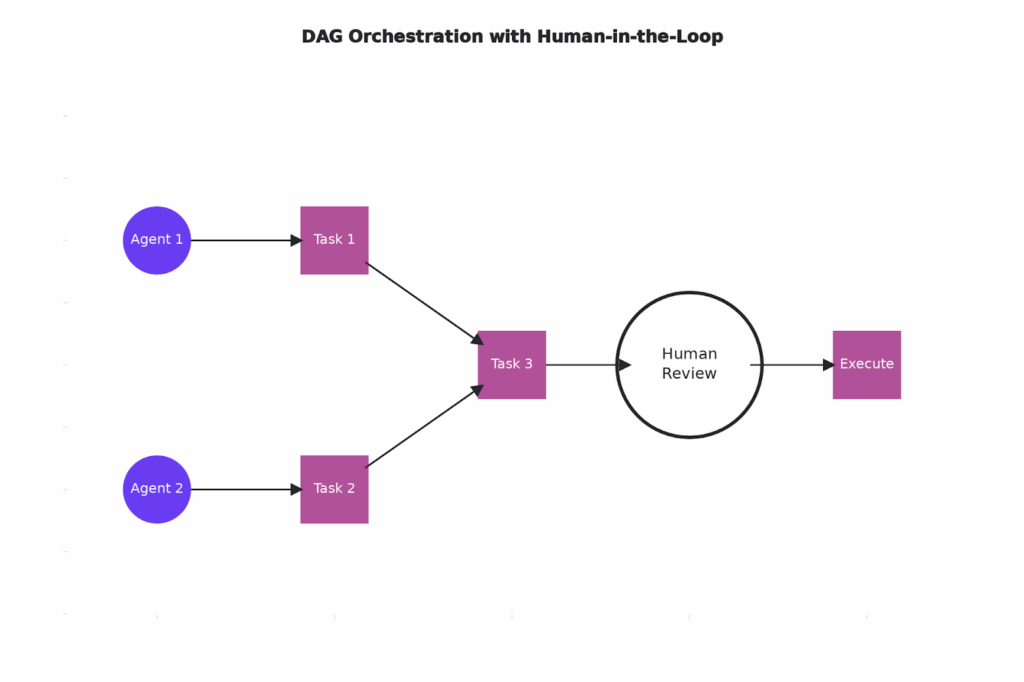
The Fortress: Security, Governance, and Compliance
The greatest barrier to AI adoption in the enterprise is not technology. It is a risk. The rise of Shadow AI where employees use unapproved tools has created a nightmare for CISOs. Gartner predicts that by 2027 40% of AI data breaches will stem from cross-border GenAI misuse. Lyzr positions itself as the Fortress against these threats.
Defeating the Prompt Injection Threat
Large Language Models are susceptible to Prompt Injection attacks where malicious users manipulate the input to bypass safety filters. Lyzr combats this through rigorous Red Teaming. Lyzr agents undergo continuous adversarial testing to identify vulnerabilities like metadata probing and toxicity evasion. The platform includes built-in Input Validators and Output Sanitizers that act as a firewall for language by scrubbing PII and blocking malicious prompts before they ever reach the model.
Zero Data Retention vs. Data Ownership
There is a profound legal distinction between Zero Data Retention and Data Ownership. Zero Data Retention means you trust the vendor to delete your data after processing so you are relying on their policy. Data Ownership means the data never leaves your infrastructure so you are relying on physics and architecture.
Lyzr’s ability to run on Private Cloud or On-Premise infrastructure means that for a client like a Defense Contractor or a Hospital the data remains physically sovereign. It allows these organizations to enforce Data Residency laws with absolute certainty.
The Compliance Stack
Lyzr simplifies the compliance audit process. Because the platform includes native Audit Logging and Role-Based Access Control and Single Sign-On it comes pre-certified for major frameworks. This includes SOC 2 Type II which verifies security and availability controls. It includes GDPR to ensure privacy rights for European citizens. It also includes HIPAA to enable the processing of protected health information. This Compliance-in-a-Box approach reduces the burden on the enterprise InfoSec team and accelerates the Time-to-Trust for new internal AI applications.
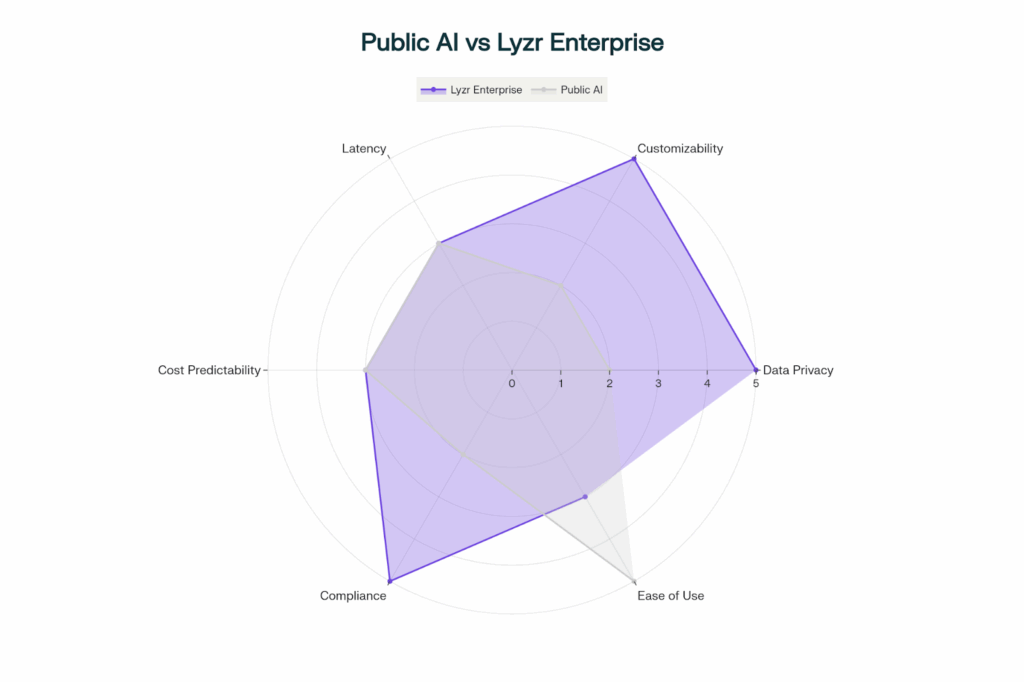
Conclusion: The Strategic Pivot to Sovereignty
The narrative of AI development is shifting from Experimentation to Industrialization. In the experimentation phase tools like OpenAI AgentKit are valuable. They are accessible and fast and visually impressive. They serve a purpose in demonstrating the art of the possible.
However as organizations move into the industrialization phase where AI agents become core infrastructure critical to revenue and operations the priorities shift. The Easy Button of AgentKit becomes a strategic liability due to data sovereignty risks and vendor lock-in and economic unpredictability.
Lyzr Enterprise has emerged as the definitive AgentKit alternative for the serious enterprise. By prioritizing Sovereignty through Private Cloud and Flexibility through Model Agnosticism and Accuracy through HybridFlow and Collaboration through AgentMesh Lyzr offers a platform that aligns with the long-term interests of the CIO and the Board.
The future of Enterprise AI will not be built on rented land. It will be built on sovereign infrastructure where the organization owns its intelligence and secures its data and controls its destiny. For the enterprise leader the choice is clear. Evolve beyond the prototype and build the fortress.
Ready to own your intelligence? Book a Demo and start building your sovereign AI workforce today.
Frequently Asked Questions (FAQs)
1. Can Lyzr agents run entirely offline without internet access?
Yes. Lyzr supports fully air-gapped and on-premise deployments. By utilizing local open-source models like Llama 3 or Mistral hosted on your own hardware you can build secure AI agents that operate without ever connecting to the public internet. This is ideal for defense and high-security banking use cases where data leakage is not an option.
2. How does Lyzr’s pricing model differ from OpenAI AgentKit?
OpenAI AgentKit typically relies on a usage-based token model which can lead to unpredictable costs as agent usage scales or as agents perform complex reasoning loops. Lyzr offers predictable enterprise pricing via flat licensing for on-premise deployment. This allows organizations to budget effectively without being penalized for high usage or complex workflows.
3. Can I use OpenAI’s GPT-4 models within Lyzr?
Yes. Lyzr is model agnostic. You can securely connect to OpenAI’s models via API while still retaining the benefits of Lyzr’s orchestration and security guardrails and data handling protocols. This gives you the raw power of GPT-4 without the ecosystem lock-in or data transit risks associated with AgentKit.
4. What is the “Hybrid Flow” architecture?
Hybrid Flow is an architecture that combines the probabilistic nature of Generative AI with the deterministic precision of traditional Machine Learning and code. It ensures that tasks requiring exactness like math calculations or regulatory checks are handled by rigid code while tasks requiring nuance are handled by the LLM. This significantly reduces hallucinations.
5. Does Lyzr support multi-agent collaboration?
Yes through AgentMesh. Unlike simple linear handoffs AgentMesh allows agents to communicate and share context and trigger actions across different domains autonomously. This fosters Organizational General Intelligence where a Sales agent can trigger a Support workflow without human intervention.
6.How difficult is it to migrate from AgentKit to Lyzr?
While there is no one-click migration due to the closed nature of AgentKit’s proprietary files Lyzr’s Agent Studio provides a visual interface that makes recreating workflows intuitive. Furthermore the Lyzr team provides White Glove onboarding to assist enterprises in re-architecting their agents for the Lyzr environment.
7. Is Lyzr strictly for technical developers?
No. Lyzr offers a dual-interface approach. Lyzr Automata is a code-first SDK for engineers who need granular control. Conversely Lyzr Agent Studio is a low-code platform designed for business analysts and domain experts to build and deploy agents using visual tools and pre-built blueprints.
8. What compliance standards does Lyzr support?
Lyzr is designed for high-compliance environments. The platform is SOC 2 Type II and GDPR and HIPAA ready. Because it supports private cloud deployment it allows organizations to easily meet Data Residency requirements that are often impossible to satisfy with public cloud tools.
9. How does Lyzr prevent “Prompt Injection” attacks?
Lyzr employs a rigorous security framework that includes Red Teaming partnerships. The system features built-in input validators and output sanitizers that scrub malicious prompts and toxic content before they interact with the core model or backend systems.
10. Can Lyzr connect to my legacy on-premise databases?
Yes. One of the primary advantages of Lyzr’s on-premise deployment option is low-latency and secure access to internal legacy systems like SQL or Oracle or ERPs without exposing them to the public internet via API tunnels. This allows agents to act on real-time and proprietary business data securely.
Book A Demo: Click Here
Join our Slack: Click Here
Link to our GitHub: Click Here



